- News
- Reviews
- Bikes
- Accessories
- Accessories - misc
- Computer mounts
- Bags
- Bar ends
- Bike bags & cases
- Bottle cages
- Bottles
- Cameras
- Car racks
- Child seats
- Computers
- Glasses
- GPS units
- Helmets
- Lights - front
- Lights - rear
- Lights - sets
- Locks
- Mirrors
- Mudguards
- Racks
- Pumps & CO2 inflators
- Puncture kits
- Reflectives
- Smart watches
- Stands and racks
- Trailers
- Clothing
- Components
- Bar tape & grips
- Bottom brackets
- Brake & gear cables
- Brake & STI levers
- Brake pads & spares
- Brakes
- Cassettes & freewheels
- Chains
- Chainsets & chainrings
- Derailleurs - front
- Derailleurs - rear
- Forks
- Gear levers & shifters
- Groupsets
- Handlebars & extensions
- Headsets
- Hubs
- Inner tubes
- Pedals
- Quick releases & skewers
- Saddles
- Seatposts
- Stems
- Wheels
- Tyres
- Health, fitness and nutrition
- Tools and workshop
- Miscellaneous
- Cross country mountain bikes
- Tubeless valves
- Buyers Guides
- Features
- Forum
- Recommends
- Podcast
review
£750.00
VERDICT:
Boardman's adventure bike has an impressive ride on and off the road, at a very competitive price
Weight:
10,570g
Contact:
At road.cc every product is thoroughly tested for as long as it takes to get a proper insight into how well it works. Our reviewers are experienced cyclists that we trust to be objective. While we strive to ensure that opinions expressed are backed up by facts, reviews are by their nature an informed opinion, not a definitive verdict. We don't intentionally try to break anything (except locks) but we do try to look for weak points in any design. The overall score is not just an average of the other scores: it reflects both a product's function and value – with value determined by how a product compares with items of similar spec, quality, and price.
What the road.cc scores meanGood scores are more common than bad, because fortunately good products are more common than bad.
- Exceptional
- Excellent
- Very Good
- Good
- Quite good
- Average
- Not so good
- Poor
- Bad
- Appalling
With the ADV 8.8, Boardman has continued its theme of offering great performing bikes at a sensible price. Well made, well specced and fun to ride, this latest adventure machine covers plenty of bases, from blasting the local gravel byways to year-round commuting. It's a lot of bike for not a lot of money.
- Pros: Lighter and cheaper than many rivals, excellent tyres as standard
- Cons: Braking power could be better, quite a gap between larger sprockets
ADV stands for adventure, and this is exactly what Boardman has aimed the 8.8 at, a little bit of everything.
> Find your nearest dealer here
As Boardman points out, we don't have thousands of miles of unsurfaced gravel roads so the company hasn't gone down that route specifically, instead taking the fast-rolling features of a road bike with slightly more forgiving geometry for multi-terrain use.
Compared with its SLR Endurance Disc model, for instance, the ADV has a much more relaxed head angle at 70.5 degrees compared to 73 degrees, and a slightly bigger bottom bracket drop of 70mm to lower the centre of gravity and aid stability.
The ride
The slacker front end means the ADV 8.8 never feels twitchy on loose surfaces, with similar steering and handling off-road to the SLR Endurance on tarmac, which is confidence-inspiring, especially if you dart between the two terrains mid-ride.
On the road the ADV loses some of its steering sharpness but it never really feels ponderous through the bends. If you commute in all weathers this slower steering benefits in dodgy weather conditions like heavy rain or greasy, salt-covered winter roads.
With a tapered head tube up front and full carbon fork, stiffness is impressive which also helps in the bends.
The gravel tracks I have near me are mainly wide and flowing, covering hundreds of miles as they criss-cross Salisbury Plain, and the Boardman really was fun to ride in this type of surroundings. It was being tested at the same time as the Canyon Grail, which is a much faster, more aggressive gravel machine, but I never thought of the Boardman as the softer option; a more relaxed ride maybe, but never dull.
Fast, rocky descents took a little more concentration to get the perfect line, and away from the Plain where the gravel tracks and twisty hardpack trails are a little more technical a more methodical and calculated approach was required, but ride the ADV 8.8 in isolation and you'll find it a fun and solid performer.
As standard, the Boardman comes with Schwalbe's G-One Allround tyres and they are very good, both on and off-road.
If you are going to spend a lot of time on the tarmac, though, as a commuter for instance, then a switch to some slicks will make for a better ride. I tried the 8.8 with both a set of 28mm road tyres I had knocking about and the 30mm-wide inverse treaded Ritchey Alpine JBs, and that really made for a fun cruising machine for the likes of commuting or day trips.
The bike rolls well, so you can cover some decent distance, and its all-in weight of 10.57kg never really feels like a hinderance under acceleration or when climbing. Boardman has specced a 48/32t chainset option plus an 11-32t cassette so you have plenty of low gears to get you up the steep stuff anyway.
Like a lot of other bikes at this price point, the ADV 8.8 is fitted with a set of mechanical TRP Spyre-C brake callipers and while they are one of the better ones, braking performance can be... how can I put it?... challenging.
You really need to pull them on hard if you need to stop from speed and there can be a few heart-stopping moments if you aren't planning ahead. There isn't a huge amount of feel or modulation and in the dry you aren't really benefiting over a good set of dual pivot rim brakes, though you are obviously reaping the benefits in the wet.
You're also experiencing less wheel wear if you ride and commute year-round: it's much cheaper to replace a rotor than a wheel rim.
Frame and fork
Boardman has created the frame from 7005 aluminium alloy and it looks and feels to be well made, with a smooth finish to the welds and a tough paintjob.
The graphics look pretty cool, too, to my mind making the 8.8 look a more expensive bike than it actually is.
As I mentioned above, the head tube is tapered, which is standard fare these days but still good to see at the lower end of the market. It goes from 1 1/8in at the top to 1 1/2in at the bottom for maximum stiffness under braking and steering. It also allows for a larger crown diameter on the full carbon fork fitted to complete the package.
All the tubing is on the larger side when it comes to diameters, although very few of them are actually round. It offers a firm ride, but like a lot of alloy bikes these days, it isn't harsh.
The top tube tapers down as it gets near to the seatpost for added comfort, and the larger diameter seat tube (it takes a 31.6mm seatpost) paired with the down tube and chunky chainstays work in the opposite direction, to create a stiff bottom end for power transfer.
Those who aren't fans of creaks will be glad to see that Boardman has gone down the threaded bottom bracket route.
One thing we have seen trickling down through the price range is the adoption of thru-axles front and rear, but Boardman has stuck with traditional quick releases here for both the rear dropouts and the fork.
Thru-axles, if you don't know, are tubes that pass through the frame and fork one side and are screwed into a threaded part on the opposing side, locking them into the bike. It adds a level of security over QR skewers, as in the wheels can't drop out even if the thru-axle was to loosen, plus there are some benefits at the fork as it helps resist twisting forces under braking on account of the rotor only being attached to one side of the wheel.
Quick releases aren't redundant, though, and they worked fine throughout the test period, especially as the brakes here don't have the amount of power that a hydraulic setup has.
The frame and fork are set up for flat mount callipers for a smoother look than post mount options.
I mentioned earlier about using the ADV 8.8 for commuting, and to make this more pleasurable it comes with a full complement of mounting eyes for mudguards and a rear pannier rack. You also get two sets of bottle cage mounts.
It's getting quite rare to see a frame that still has external cable routing but the 8.8 does use various guides to keep everything looking neat and tidy as it passes underneath the down tube.
Wheels and tyres
Speccing Schwalbe's awesome G-Ones as standard is a bit of a masterstroke by Boardman, as they are great all-rounders perfect for the 'bit of everything' style of the ADV. They are fast on the road and grippy too, and take most things in their stride away from it; they're especially suited to hardpacked gravel and firm, dry forest trails.
The trade-off is that they can be a little fragile, which I have found through testing them on various other bikes, but I had no issues here.
Boardman provides its own wheelset, made up of ADV tubeless ready rims mated to Formula hubs. It's not a massively exciting package but it works well and the wheels feel very solid, taking plenty of abuse on the trails. Both the front and rear use 32 spokes set up in a two-cross pattern for strength.
The bearings feel smooth and the pick-up from the freehub pawls is quick enough so I'd be happy to leave these fitted to the ADV without worrying about an upgrade – not something I often say when it comes to bikes below a grand.
Finishing kit
Shimano provides the majority of the drivetrain by way of its 9-speed Sora groupset. It's great kit and good to see here as the shifting is positive and the gear/brake STI levers are a joy to use.
As they mimic the design of the 105 5800 shifters and those of the next level up Tiagra model, there is very little to separate them other than the fact that those two get an extra sprocket or two.
> Your complete guide to Shimano groupsets
The cassette we have here ranges from 11 to 32 teeth (11-12-14-16-18-21-24-28-32), which as you can see has pretty close jumps at the bottom of the sprockets but they get larger towards the bigger ones. A jump of four teeth is quite noticeable but as they are predominantly for the bailout gears, I could live with it.
FSA has supplied the chainset, primarily because Shimano doesn't offer a 48/32t chainset option in Sora. The FSA shifts across chainrings fine, and even though it looks a little dated with its cartridge bottom bracket setup, there is no need to rush out and upgrade.
TRP Spyre-C mechanical brakes are starting to become the norm on bikes of this price, but as I said above they aren't the most powerful, even when paired with the 160mm diameter rotors. I ride a lot of disc-equipped bikes and most of them have hydraulics so I probably notice the difference between them and the Spyres more so than someone coming from cable-operated rim brakes, but just don't be expecting anything amazing in terms of a performance upgrade.
Unlike a lot of mechanical disc options, the Spyre-Cs do move both pads onto the rotor so you get equal pressure applied. A lot of others on the market have just the one side that moves, pushing the rotor across to the stationary pad, so the Spyres do have a benefit there.
The rest of the finishing kit comes from Boardman's own box of bits.
The aluminium alloy stem does the job, and like most adventure bikes you get a shorter length fitted than you would to the equivalent road machine: just 80mm here on the ADV 8.8.
I'm a big fan of a flared handlebar on bikes designed for off-road use, as it gives a bit more stability when you are flying along in the drops. At the hoods it measures 440mm across but that increases by quite a bit by the time you get to the bottom.
The bar is again an alloy offering but it is stiff enough for hauling up hills or when you load it up when cornering hard or braking.
On all its bikes, Boardman seems to favour a 31.6mm seatpost over a narrower 27.2mm option. It is a minimal difference but going for the smaller option promotes a little more flex for comfort, especially if you swap out the standard alloy one for a carbon fibre post.
One thing that I wasn't totally enamoured with was the Boardman Road by Velo saddle; I just didn't really get on with the shape or its firmness. It's a personal thing, though, and swapping to a trusted favourite isn't a major hassle.
Value
We've had quite a few of this style of bike in lately and at first glance the ADV 8.8 is one of the cheapest at £750, and it comes in a women's version too. If you want hydraulic braking there is an 8.9 model with 10-speed Tiagra hydraulic shifters, mechs and an upgraded FSA chainset for £1,000.
The closest in price to the 8.8 is Raleigh's Mustang Sport, a similar beast with an alloy frame and carbon fork, but it only gets 8-speed Claris and it weighs 11.38kg compared to the Boardman's 10.57kg.
> Buyer's Guide: 19 of the best gravel and adventure bikes
A bike that I really enjoyed riding was the Kona Rove DL, which comes with a very similar setup for its £899 but it does get a Sora chainset. It has an aluminium fork instead of carbon and weighs a heady 12.17kg, although as I said in my review, it never felt heavy when being ridden.
Then there is the Bianchi Via Nirone All Road – not quite as off-road inspired as the Boardman, and it costs £1,000 for very similar kit and weight.
Conclusion
On paper, it's hard to discount the ADV 8.8. It's relatively light against the opposition, and quite a bit cheaper. In the real world that doesn't change either: it's a fun bike to ride, has loads of versatility and really is a bargain.
Verdict
Boardman's adventure bike has an impressive ride on and off the road, at a very competitive price
road.cc test report
Make and model: Boardman ADV 8.8
Size tested: Medium
About the bike
State the frame and fork material and method of construction. List the components used to build up the bike.
FRAMESET
7005 Alloy, smooth welded, adventure geometry frame
Full carbon blades and steerer, tapered fork
FSA Orbit C-40 ACB, 1 1/8' - 1.5' Tapered, Integrated headset.
FSA cartridge 68x110.5mm bottom bracket
GROUPSET
FSA Omega Adventure, Mega Exo, 48/32t chainset
Shimano Sora, double, 34.9mm clamp front mech
Shimano Sora, 9 speed, medium cage rear mech
Shimano Sora levers, 2x9
Tektro Spyre mechanical disc, flat mount, 160mm rotor front
Tektro Spyre mechanical disc, flat mount, 160mm rotor rear
Shimano HG400, 9 speed, 11-32t (11-12-14-16-18-21- 24-28-32) cassette
KMC Z99 chain
COMPONENTS
Boardman Road by Velo, steel rails saddle
Boardman Alloy, 31.6 x 350mm seatpost
Boardman Alloy, 31.8mm clamp
Boardman Alloy, 31.8mm clamp, 70mm reach, 120mm drop handlebar
Boardman Soft-grip bar tape
Wellgo alloy with straps, 9/16' pedals inc
WHEELSET
Boardman ADV Tubeless Ready
Formula QR hubs
Boardman Asymmetric Adventure Tubeless Ready Rims
Schwalbe G-One allround, 700x38c, raceguard, folding bead tyres
Tell us what the bike is for
Boardman says, "The ADV 8.8 Adventure Bike is a bike truly made to help you explore new possibilities. There's lots of talk of 'gravel' bikes at the moment, but in the UK we don't have thousands of miles unsurfaced gravel roads, so we've designed this bike to offer maximum versatility for UK riding adventures. Taking the fast rolling features of a road bike, the ADV bikes have a more forgiving geometry that allows a more stable upright riding position for on and off-road use. With a lower bottom bracket for better stability and 38mm wide Schwalbe G-One tyres this bike is adept at riding in comfort on roads but really excels when you want to get off the beaten track. Shimano Sora 2 x 9-speed gears with a subcompact chainset (48/32) give you a great range of gears and plenty of scope, even if carrying extra gear, to get up any hill you come across. Pannier rack and mudguard ready, this bike is also a brilliant commuting option with powerful TRP Spyre disc brakes to keep you safe in all conditions."
Frame and fork
Overall rating for frame and fork
8/10
Tell us about the build quality and finish of the frame and fork?
Smooth welds give a clean look and the paint finish stands up to off-road knocks.
Tell us about the materials used in the frame and fork?
The frame uses a 7005 series aluminium alloy with the fork being full carbon fibre.
Tell us about the geometry of the frame and fork?
Based on Boardman's endurance road bike range but with a slightly more relaxed front end and lower bottom bracket for stability off-road. You can see the full chart here - https://www.boardmanbikes.com/gb_en/products/2145-adv-8.8.html#size
How was the bike in terms of height and reach? How did it compare to other bikes of the same stated size?
With the tube lengths and angles used in its construction, the stack and reach figures are pretty typical for this style of bike as they are similar to most gravel/adventure bikes.
Riding the bike
Was the bike comfortable to ride? Tell us how you felt about the ride quality.
Yes, the alloy frame isn't overly harsh even when you have the tyres pumped up to road pressures on the gravel.
Did the bike feel stiff in the right places? Did any part of the bike feel too stiff or too flexible?
Yes, for the design of the frame and its intended use I certainly had no issues with stiffness under load.
How did the bike transfer power? Did it feel efficient?
Very well. The bike responds well to your input without feeling heavy or sluggish.
Was there any toe-clip overlap with the front wheel? If so
No.
How would you describe the steering? Was it lively Neutral on the road, a little more lively off.
Tell us some more about the handling. How did the bike feel overall? Did it do particular things well or badly?
Whatever the terrain, the ADV 8.8 is a very stable bike which makes it fun to ride no matter what your ability.
Which components had the most effect (good or bad) on the bike's comfort? would you recommend any changes?
I'd swap out the saddle as I didn't really get on with its firmness or shape, but everything else worked fine.
Which components had the most effect (good or bad) on the bike's stiffness? would you recommend any changes?
The bar and stem do a good job of offering plenty of stiffness without being harsh.
Which components had the most effect (good or bad) on the bike's efficiency? would you recommend any changes?
The Schwalbe G-One tyres are quick on and off-road, which really helps with efficiency.
Rate the bike for efficiency of power transfer:
8/10
Rate the bike for acceleration:
7/10
Rate the bike for sprinting:
7/10
Rate the bike for high speed stability:
8/10
Rate the bike for cruising speed stability:
8/10
Rate the bike for low speed stability:
8/10
Rate the bike for flat cornering:
8/10
Rate the bike for cornering on descents:
7/10
Rate the bike for climbing:
7/10
The drivetrain
Rate the drivetrain for performance:
8/10
Rate the drivetrain for durability:
8/10
Rate the drivetrain for weight:
7/10
Rate the drivetrain for value:
7/10
Tell us some more about the drivetrain. Anything you particularly did or didn't like? Any components which didn't work well together?
I really like Shimano's Sora groupset and it's good to see on a bike of this price. The chainset is a bit old school but having the lower ratios does help off-road.
Wheels and tyres
Rate the wheels for performance:
8/10
Rate the wheels for durability:
8/10
Rate the wheels for weight:
7/10
Rate the wheels for comfort:
7/10
Rate the wheels for value:
7/10
Tell us some more about the wheels.Did they work well in the conditions you encountered? Would you change the wheels? If so
Solid and dependable wheels which aren't too heavy, great for the price.
Rate the tyres for performance:
9/10
Rate the tyres for durability:
7/10
Rate the tyres for weight:
8/10
Rate the tyres for comfort:
8/10
Rate the tyres for value:
7/10
Tell us some more about the tyres. Did they work well in the conditions you encountered? Would you change the tyres? If so
Brilliant tyres and way better than you'd normally expect on a bike of this price.
Controls
Rate the controls for performance:
8/10
Rate the controls for durability:
8/10
Rate the controls for weight:
7/10
Rate the controls for comfort:
7/10
Rate the controls for value:
7/10
Tell us some more about the controls. Any particularly good or bad components? How would the controls work for larger or smaller riders?
Solid kit that does the job. Great to see the flared drops on the handlebar and they are shallow, too, to suit smaller riders.
Your summary
Did you enjoy riding the bike? Yes
Would you consider buying the bike? Yes
Would you recommend the bike to a friend? Yes
Rate the bike overall for performance:
8/10
Rate the bike overall for value:
7/10
Use this box to explain your overall score
The ADV 8.8 is a very good package for the money and it is also a very capable machine on and off-road. It's a quality all-rounder.
About the tester
Age: 39
I usually ride: This month's test bike My best bike is:
I've been riding for: 10-20 years I ride: Every day I would class myself as: Expert
I regularly do the following types of riding: time trialling, commuting, club rides, sportives, fixed/singlespeed
Since writing his first bike review for road.cc back in early 2009 senior product reviewer Stu has tested more than a thousand pieces of kit, and hundreds of bikes.
With an HND in mechanical engineering and previous roles as a CNC programmer/machinist, draughtsman and development engineer (working in new product design) Stu understands what it takes to bring a product to market. A mix of that knowledge combined with his love of road and gravel cycling puts him in the ideal position to put the latest kit through its paces.
He first made the switch to road cycling in 1999, primarily for fitness, but it didn’t take long for his competitive side to take over which led to around ten years as a time triallist and some pretty decent results. These days though riding is more about escapism, keeping the weight off and just enjoying the fact that he gets to ride the latest technology as part of his day job.
Latest Comments
- Rendel Harris 10 min 19 sec ago
I agree with everything you say except that figure, which is extremely dubious; it would mean that half the world's population watches professional...
- eburtthebike 1 hour 22 min ago
I well remember the BBC rolling out their environment correspondent to criticise LTNs.
- IanGlasgow 2 hours 12 min ago
Agreed. I won't consider any product that doesn't use USB-C anymore. I usually have a USB-C cable and a battery bank in my toolkit which will...
- David9694 2 hours 9 min ago
Pensioner left with £1,300 vet bill after cyclist ran over dog in Swalecliffe, near Whitstable, and fled...
- Terry Hutt 7 hours 32 min ago
Those models aren't miserable etc. They're hungry.
- Bungle_52 14 hours 39 min ago
This was a failure to give way at a roundabout so although it was relatively straightforward to anticipate and avoid there is traffic law to...
- wtjs 15 hours 59 min ago
she questioned what Police Scotland is doing to "deter dangerous driving and protect cyclists"...
- wtjs 16 hours 9 min ago
I've got a few reports coming up to one year where I've been told that they will take action but I don't know what action yet. I'll let you know...






































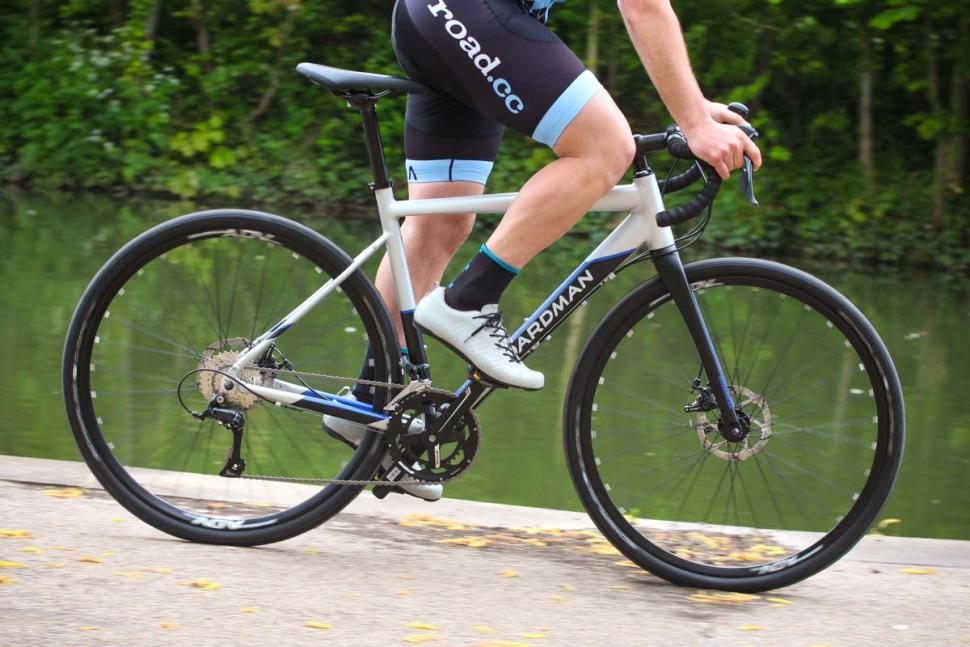

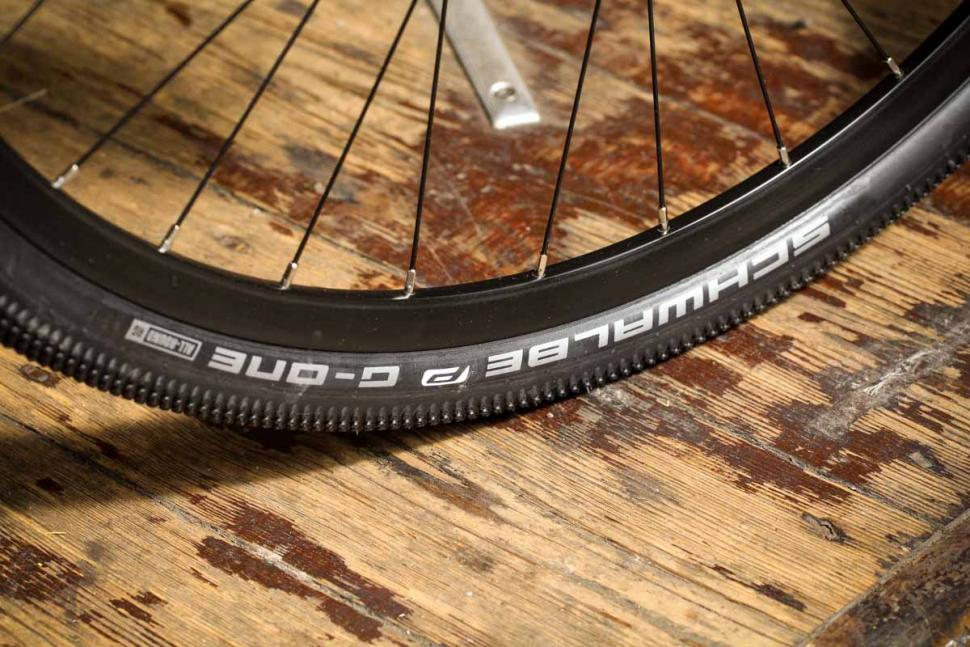




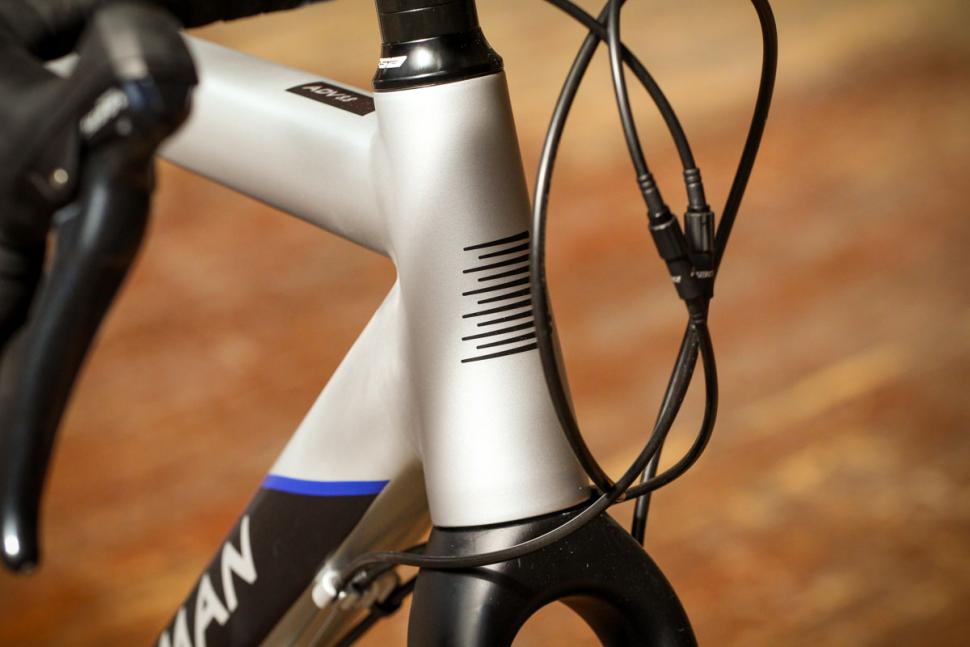

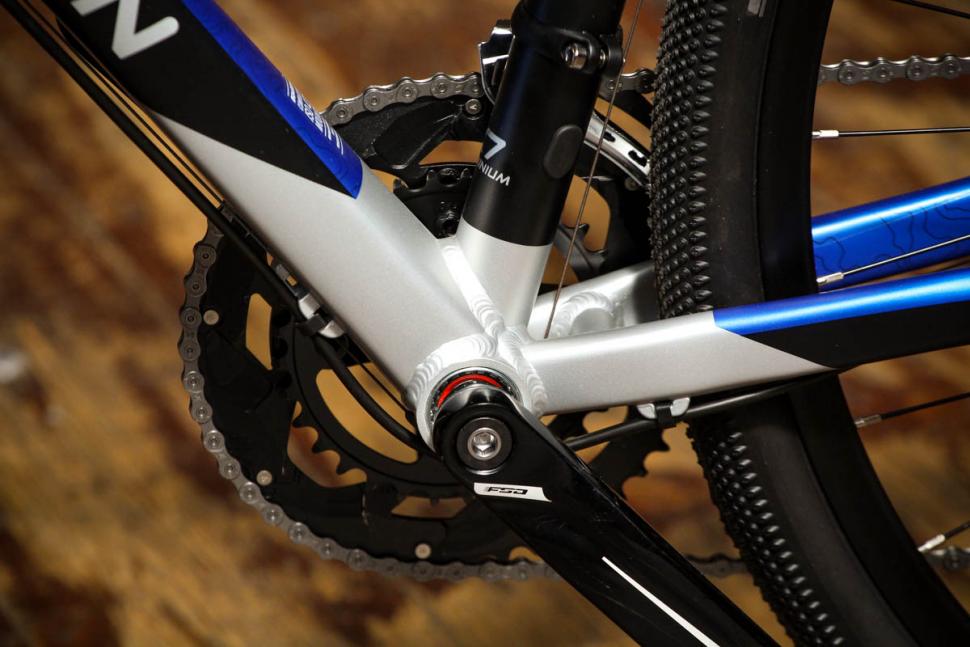


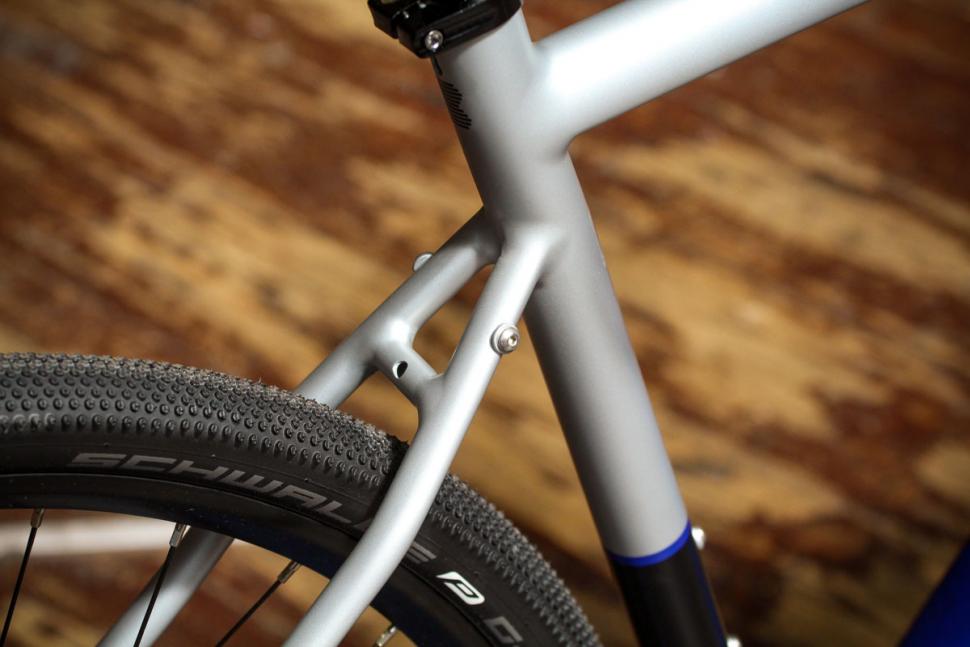
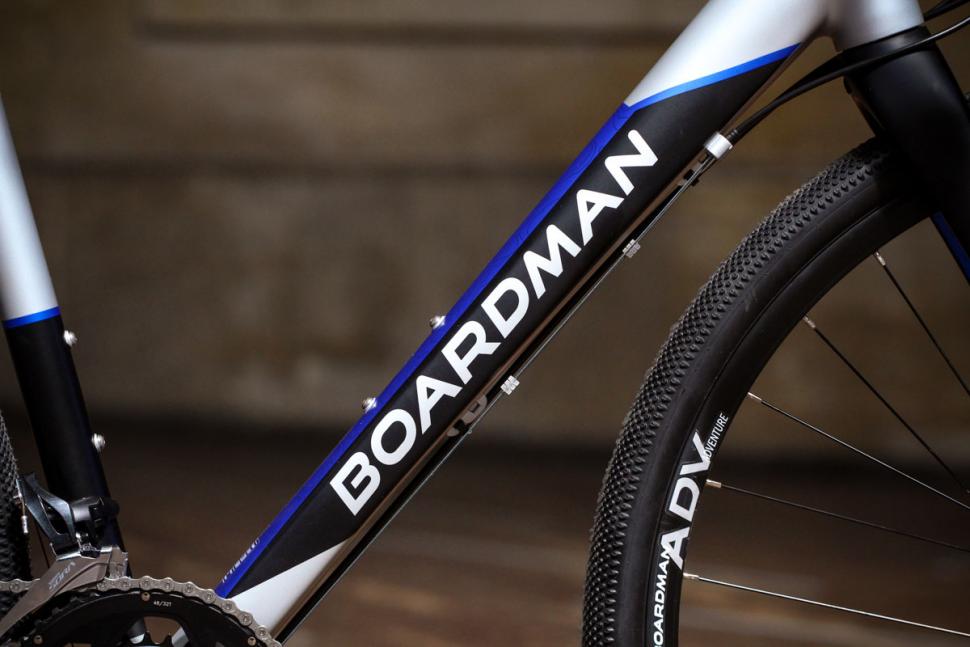

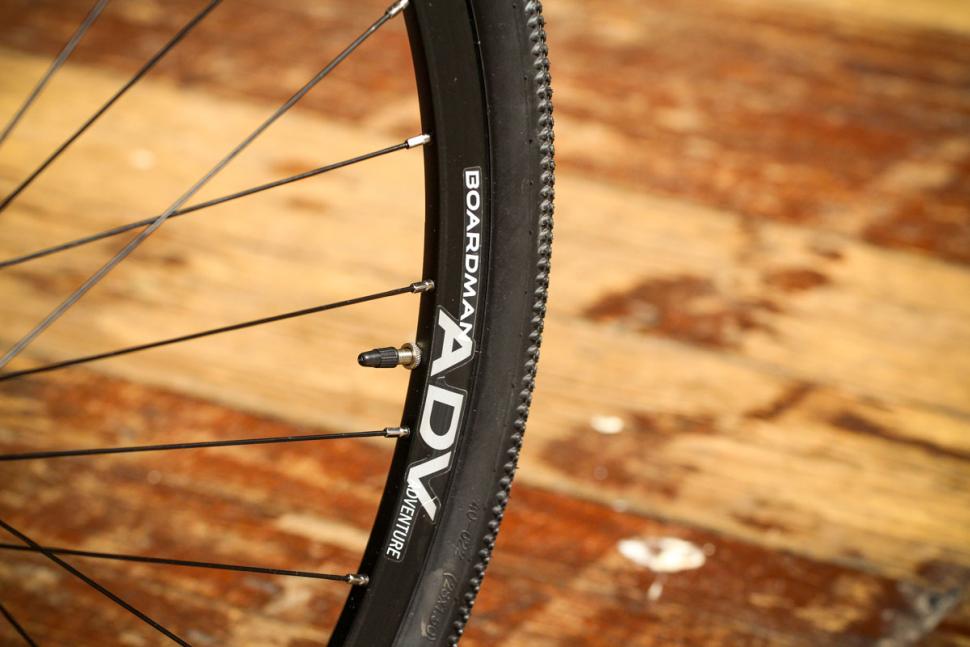
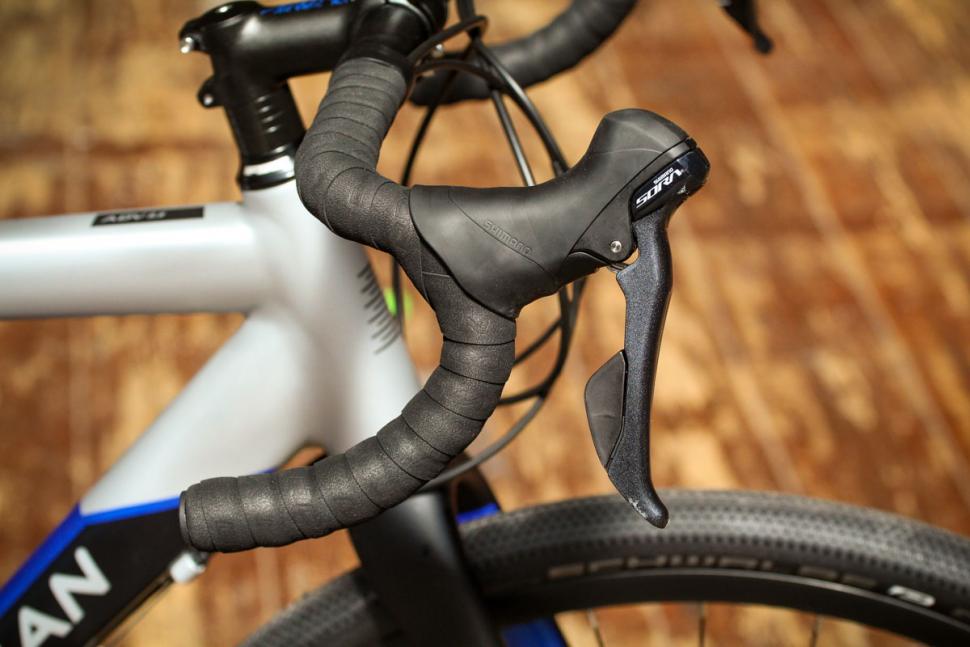
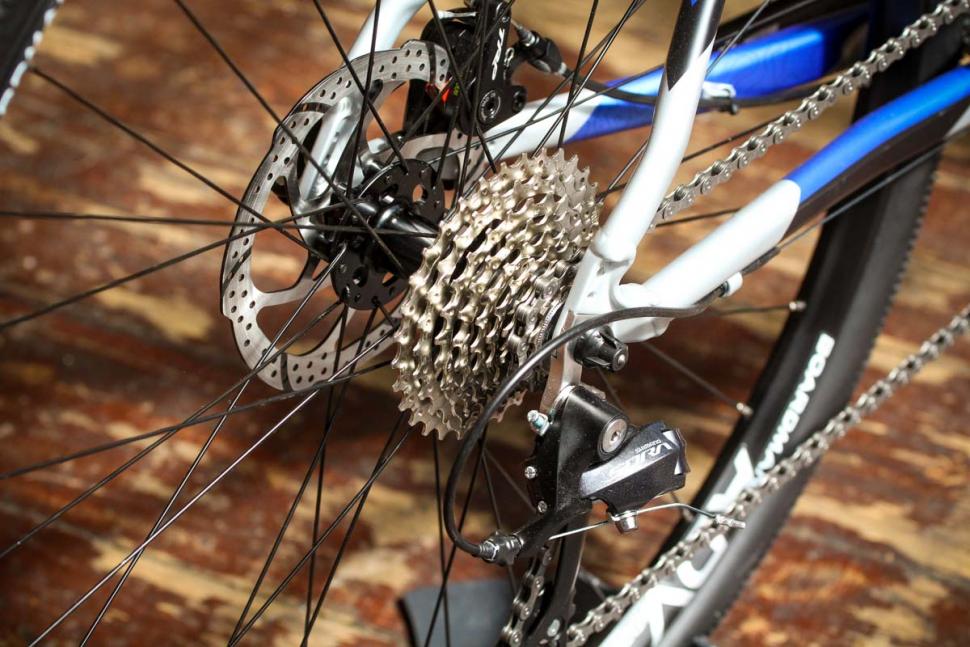

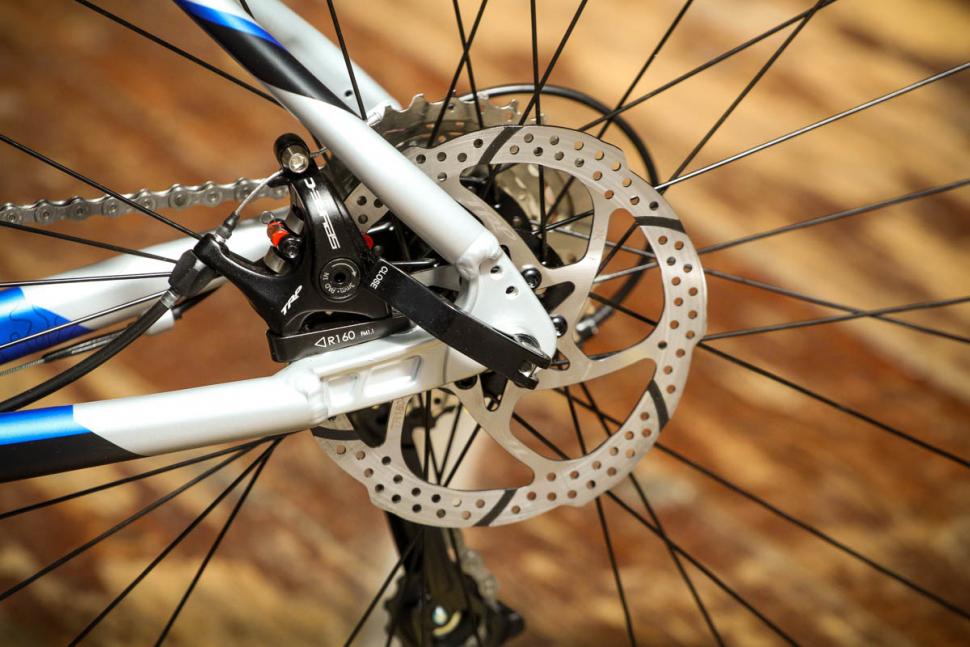

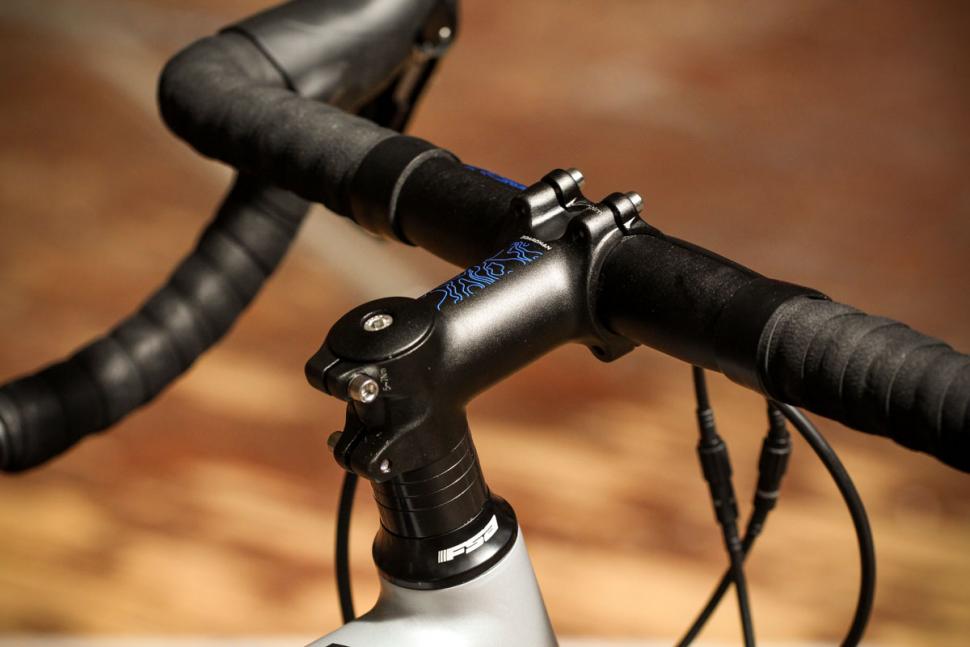
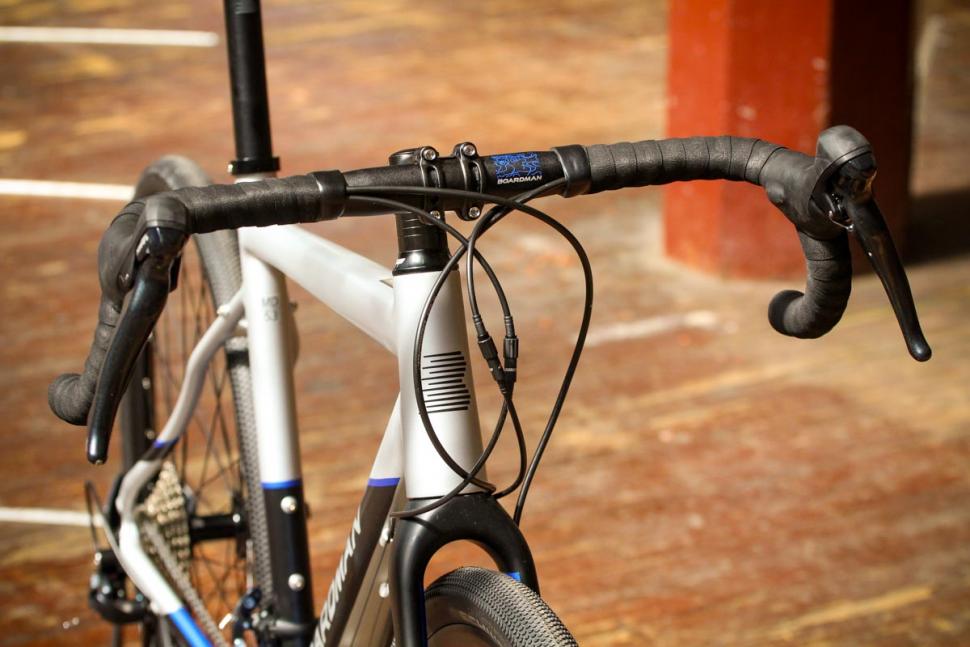


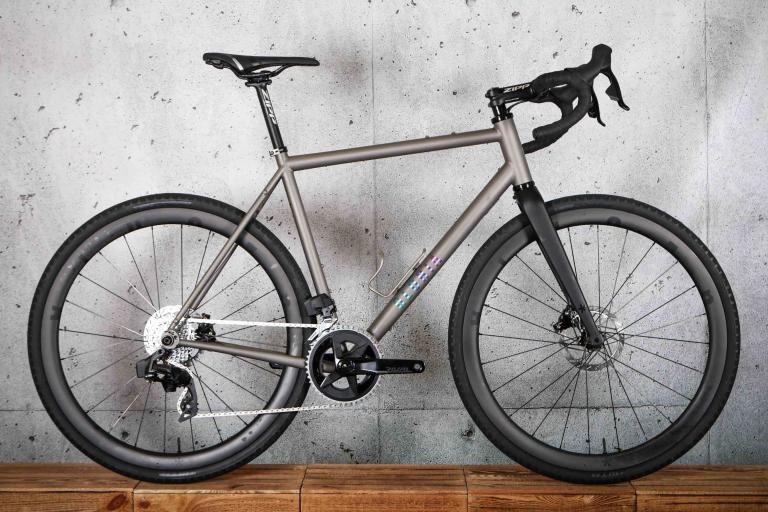
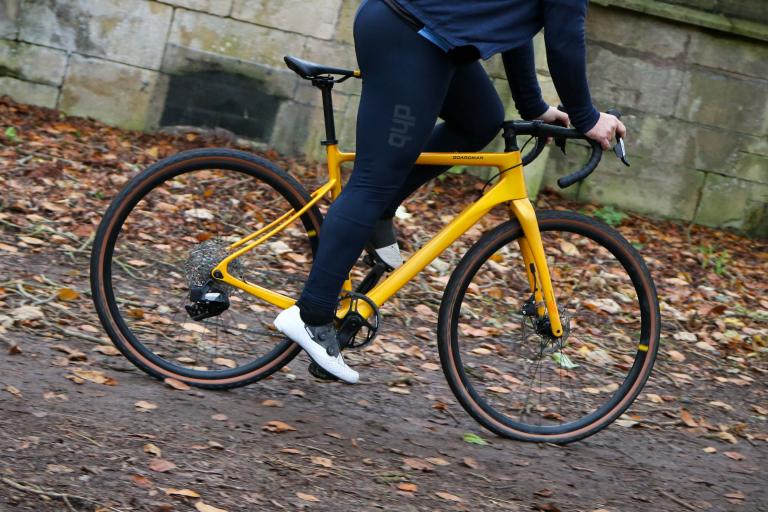

Add new comment
17 comments
I have FSA Mega Exo 4000 Threaded BB with the 48-32 cranks. So far I've done 2700 miles, only needed the threads re-greasing once so far, chainrings are ok.
Pinnacle Arkose 1 model is an alternative to the Boardman. It looks to be heavier although does come with wider/heavier tyres. When I've test ridden another Boardman the actual weight was 0.8kg more than the published weight/on their website.
Regarding braking I'd prefer Hydraulics but happy with the performance of the TRP Spyres with Jagwire compressionless housing.
I have the ADV 8.9 a year now and it is a decent bike. I thought I'd post a little review here as there are few reviews of the 8.9 online so people end up at this review. There's now a 9.0 as well, using the same frame I think. I bought the 8.9 because it was the cheapest gravel bike with decent (tiagra) hydros, and still is, though it now has a competitor in the Vitus range with almost the same spec and price.
The compromise you would expect at this range is there in the form of pretty heavy wheels. On the plus side, I went down rocky bridlepaths in the Peak District with loaded panniers and they withstood everything, so no real complaints.
The other downside is something I'll have to disagree with this review on: I think the frame transmits too much bumpiness from the road. I've had Cannondale and Giant frames in the same price bracket that were a much smoother ride. This is one thing I do wish were better, and if I had to buy again I might try the Vitus just to see if the frame had a smoother ride. Still, it's totally rideable and takes everything you throw at it (I commute and ride on countryside trips) so not the end of the world.
The one thing they can and should change is that FSA bottom bracket and crankset. The BB is crap and an internet search will reveal many similar experiences. I got a creak after about 5 months. Also there's only FSA replacements unless you change the cranks too, as they use a non-Shimano size - which is really annoying. So I've had to replace the crap mega-exo 4000 with exactly the same. By 10 months when I was changing out the chain and cassette I discovered the FSA chainrings were worn much more than you'd expect. I've never had chainrings wear out before so that was a nasty surprise. It wouldn't even take the Shimano chain and we had to fit a KMC one which apparently has more give. Next time I change the chain and cassette I'm expecting to have to change the chainrings as well. At that point I may well end up replacing BB and cranks with Shimano, which is expensive but would be worth it for less grief. Alas the Vitus appears to have exactly the same crap BB and cranks. I'd pay £30 more on the price not to have such poor quality parts, which I suspect is all they saved.
A word on the Tiagra hydros: they're not bad, but not quite the step change I thought they would be from good mechanical disc brakes. I didn't think much of the lauded Spyres but had good experiences of BB7s and the best experience of the little-known Shimano CX77s. I would totally buy another bike with the latter brakes. I wish they'd standardise brake pad sizes - there's not a lot of choice for the Tiagra pads and the Shimano ones are only passable.
Anyway, it's still a pretty good package for the price. Boardman just need to get rid of that shonky FSA kit to make me recommend the bike.
Really helpful that Guayaba, am currently looking at a winter commuter in this kind of range and have been considering the 8.8 / 8.9 and some Merlin and Planet X offerings so this type of info is great.
Glad I could help. As a footnote if you want a gravel bike in this price range with hydro brakes, I see Canyon are now doing one. And it's better spec than either the Boardman or Vitus, notably without the crappy FSA kit (I have a creak in the replacement BB already - so rubbish).
I have 'cheat' or 'cross' brakes on mine and find these offer more power/immediate braking and modulation (though less travel), I think a lot of the issue could be in the lever travels...
Not doubting Stu's experience of this test bike at all, but I have to say that on my bike - with Apex levers - Spyres are absolutely brilliant. Jagwire compressionless cables and setting them up properly works wonders.
Just get one of those captain crush hand strengthener things and you can save money by only ever having to buy tiagra brakes.
If you can't brake properly using a pair of RX100 dual pivots in any conditions then it's any wonder you have the hand strength to even take a tyre off a rim, it's hardly requires any hand strength to do the former.
my hand strength is fine but there’s a difference between braking on a flat road and stopping from 35mph on a 15% grade, and grip strength is a good indicator of how long you will stay independant in old age, so everyone get yo captain crush on.
..........not sure why Tass' post hadn't shown up before I posted but there you go!
Well I must say for £750, that looks like a fanstastic bike! £1000 with hydro brakes too!
How do the testers go about bedding brakes in? Could imagine it gets a bit time consuming performing '20 hard stops from speed' etc. on every new bike you get to test. Only asking as that front rotor does NOT looked bedded in...
The static shots are taken before the bike gets ridden, Ian, so no surprise there. Each bike is tested for at least a month, sometimes more, so plenty of time for bedding in the brakes (especially with the hills round these parts!).
Hi IanEdward,
All the pics you see here are taken before the bike goes out for review and the bike was pretty much brand spanking new like a lot of the demo bikes we get sent in so that's why the rotor doesn't look bedded in.
The usual routine is;
1: Bike arrives
2: Pack and riding shots taken
3: Bike heads off too reviewer for a minimum of four weeks of riding
4: Review written and posted on road.cc
For me most bikes get at least 300 to 400 miles of riding under their belt before they are returned to the office so that offers plenty of time for things to bed in and settle down.
Ideally you'll get a couple of wet days too (not much chance of that at the moment) which really helps to bed things in like the brakes before the test period is over.
Another thing that helps is that a lot of bikes of a similar price share the same components. Over the last three months I've ridden a range of bikes using the same brakes as the Boardman for instance and you soon notice a pattern.
Cheers
Stu
Spyres are underwhelming, even when set up right. Too much lever travel for my liking, but that's common to all mechanical discs.
They're *mechanical* disc brakes, hardly think many are heralding them as The Second Coming. At least Stu is reporting what he tests rather than some silly outburst based on Lord knows what.
"Braking power could be better"? But it has DISC BRAKES, the cure-all for all of modern cyclings ills.
Hahahahahahahaha!